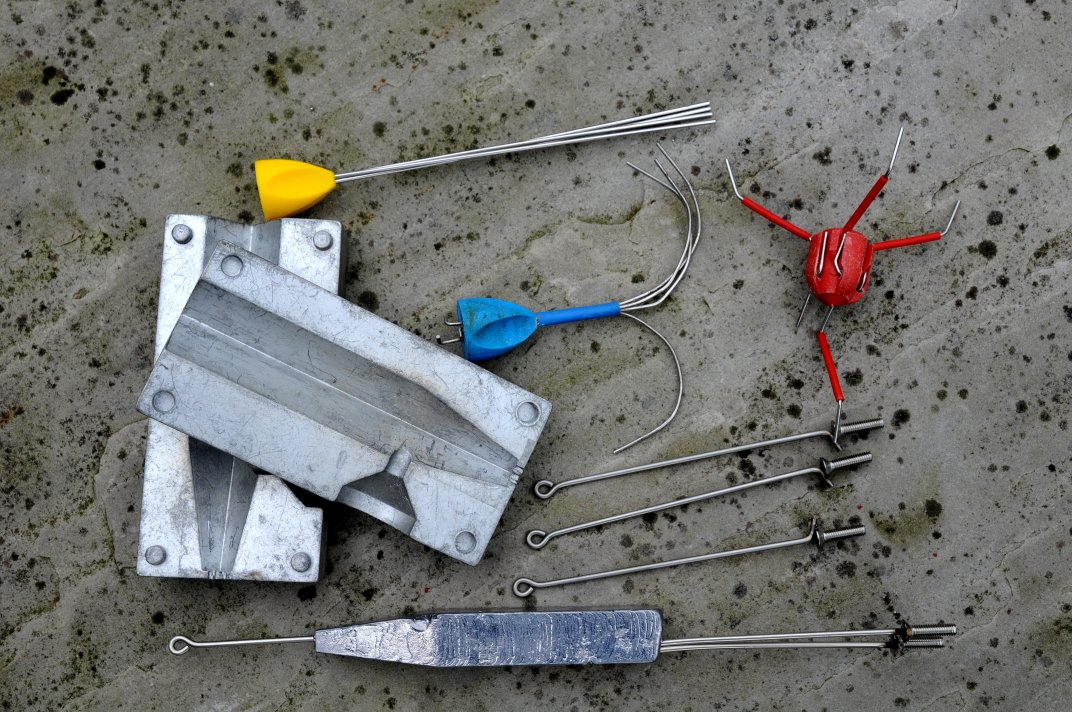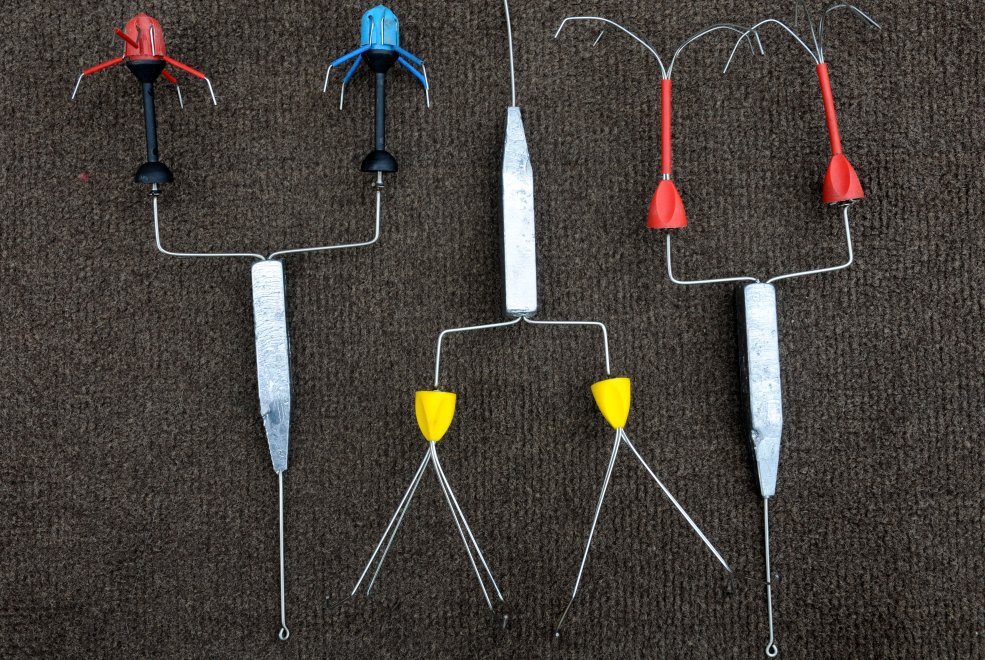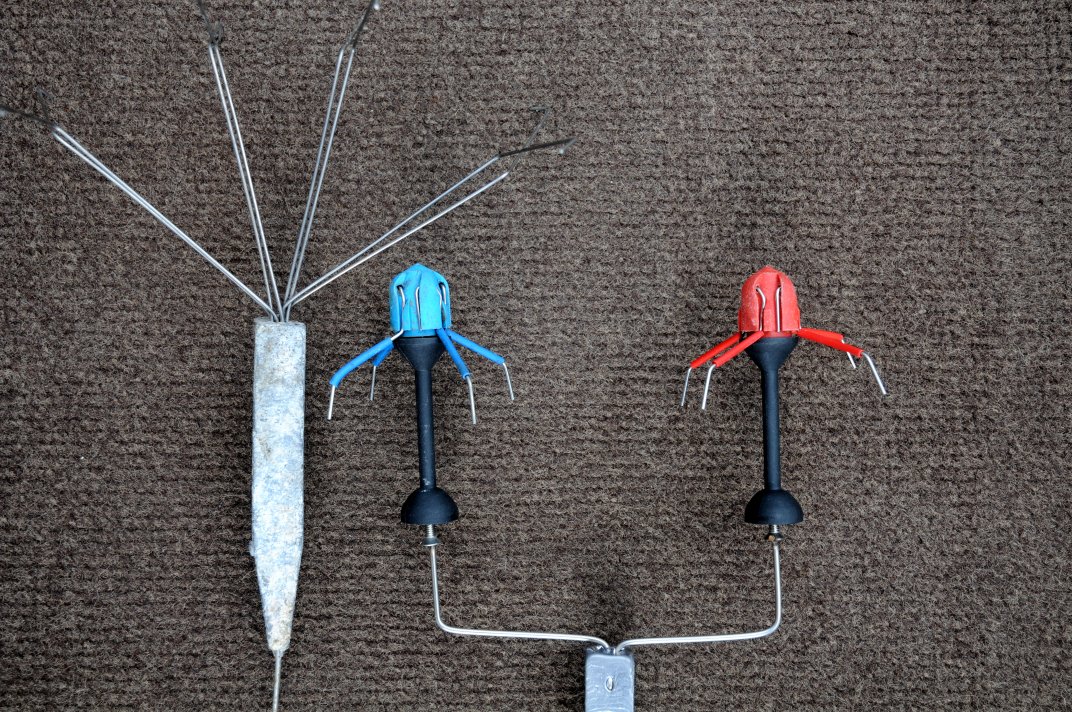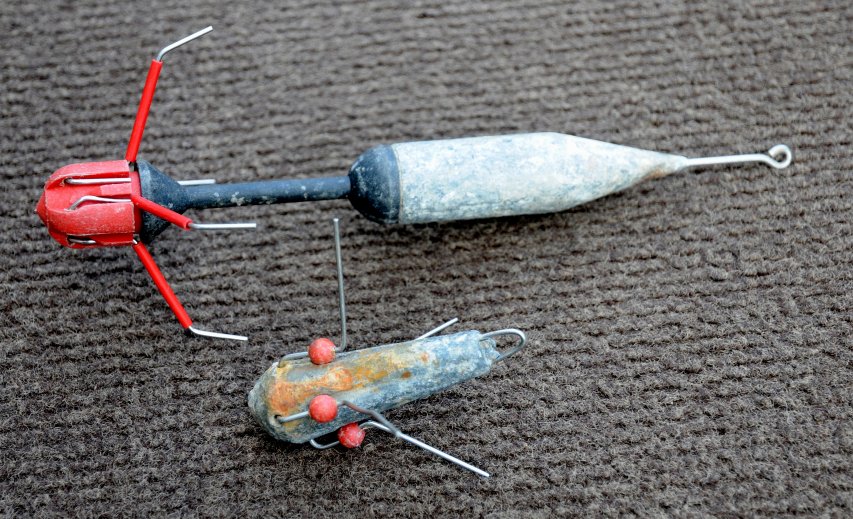The Gemini Mission

Despite what anyone else might have you believe, when it comes to uptide boat fishing, nothing beats the Gemini grip lead collection. Not because there is anything particularly special about the materials used, the manufacturing process, or anything like that. It's the concept. The mission. In short, the design quality. Boat grip-leads and shore grip-leads are two completely different design concepts and as such should are not interchangeable, particularly from the shore to the boat, and especially when using traditional 'Breakaway type' grips. From the shore, and in particular the beach, the Breakaway concept of having release wires fixed a good third of the way along the body up from the tip makes sense for two reasons. Particularly from most beaches, where the water is going to be shallower than that encountered from a boat, and when fished on a longer line from the shore unlike from a boat where a good lob is all that is required. Pulling the grip wires in at the shallower angle this creates will see a mid body wired lead take a better grip that many nose wired alternatives due to the weight displacement around its fulcrum point.
But take that same mid body wired lead out in the boat where the water is often deeper and the cast is shorter creating a much steeper line angle back to the rod tip, and it will 'sit' on it's wires offering little or no potential for grip at all. A nose wired grip lead on the other hand such as the Gemini has a much better chance of biting into soft substrates. And as the line angle gets steeper either through increased water depth, inability to cast, or a combination of the two, plastic extensions are available to screw on to the end of the Gemini lead to take the grip wires further away, altering the fulcrum point again in favour of the weighted back end, causing it to lie flat allowing the wires once again to get a good grip. Over heavy ground of course, the wires have a better chance of taking hold without the nose extension though it is still better to use one anyway.


The problem is, and this applies to all shapes of lead and distribution of grip wires, that with over the counter grip-leads, this potential for holding can only extend so far. A point eventually comes where the sheer force of the tide out-does the holding potential of the lead, and this applies to all leads, be they grips or other designs. Then you've lost it. With uptiding, the belly in the line put there to prevent the grip of a barely holding lead from being broken by the roll of the boat in a swell does help. But again, it can only do so up to a point, after which it's either time to pack and wait for the run to ease, or go back to the drawing board, and in that regard, I chose the latter option.
In a nutshell, there are two ways of enhancing your ability to hold baits at the bottom which is where most UK fish species want them. You either increase the weight, which may only work up to a point and will ultimately become a chore to retrieve, or if it's a grip-lead, you upgrade it's holding potential. And if that doesn't work, you can do both, which is exactly what I have done to tackle some of the most extreme tidal conditions I have ever come across in the River Mersey where even then you can only fish the place through a complete tide on the neap end of the cycle. It literally screams through like an express train at the mid tide point. But if you can keep the lead on the bottom and switch to a short trace to keep the bait down too, fish are still willing to feed. The trick is achieving that.
It should be noted here that this is not a River Mersey fishing article. There will be extreme tidal conditions with water shallow enough for uptiding dotted all around the country. Uptiding, as has been demonstrated on so many occasions, can bring more fish to the boat by virtue to of placing and holding the baits well away from the noisy scare area around the boat which fish will give a wide berth to. But as importantly, if your line is going away from the boat at any angle other than that dictated by the tidal flow, which is straight over the back, such as held across the tide by a grip-lead and is managing to maintain that position, then by definition it has to be holding bottom, which is more than can be said for conventional drop down leads, particularly in a run as strong as the Mersey.

For years I have used my own grip-lead design concept or 'super-grip lead' with eight grip wires fitted and bent over like any other fixed wire grip, only in a fan like spread, with two sets of four facing in opposite directions so that it takes hold whichever way it settles out on the bottom giving twice the gripping potential of over the counter wired leads. Moreover, using a large lead mould with an open end to pour into to allowing the wires to be fixed directly into the nose, I have increased the physical weight of the lead from a previous maximum of eight ounces to twelve ounces, and take it from me, with 100% more gripping potential and 50% more body weight, this grip-lead holds. The only draw back is that you do need to use it from a tubi-boom to ensure the trace doesn't become entangled with the abundance of grip wires either before or during casting.
More recently however, and getting back to the title theme of this particular article which is the Gemini concept, I have switched from my original fixed wires, which still work perfectly well, to Gemini components. Fixed wires are great and probably work out cheaper, but require greater time input in finding and preparing the stainless steel wire. With the Gemini components, everything is there ready for use, on top of which they offer greater flexibility allowing you to swap the heads from breakout wires to curved fixed wires through to my original design of fanned fixed wires according to conditions, all of which is achieved by using one of the wires with a tail loop and head screw just as a long tail wire, and two more at the head end for the wired caps. These are then bent over flat to the end of the lead, then right angled up at a spacing that allows two heads to be fitted without them interfering with each other, providing twice the gripping power from whatever size of lead body you chose to make.
I actually made a double headed Gemini version when I cast my first fixed wire fan grips several years ago, and now I tend to use them most of the time. I'm certainly not making the fixed wired fans any more, though I still have quite a few left over which I will still use. And between the two, I can actually see If I'm holding and be confident that my bait is fixed to the bottom, which is more than I was able to do in the years before.